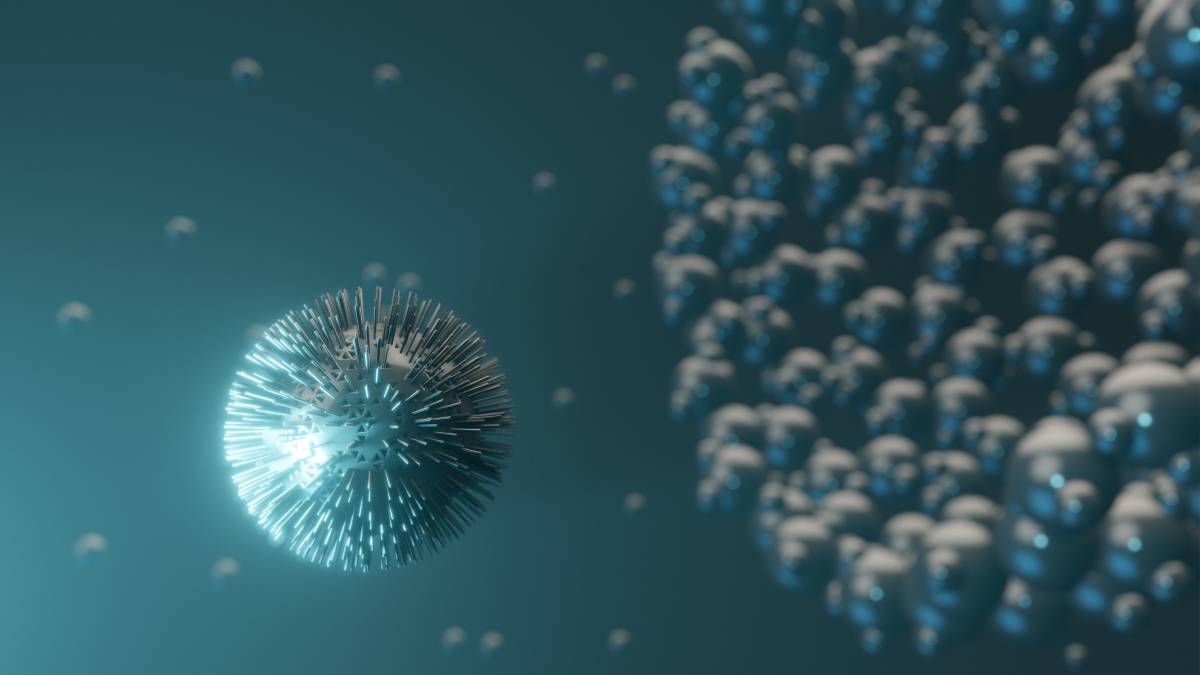Over the past year, COVID-19’s global spread has continued, leaving no corners of the world untouched. An unprecedented danger, this coronavirus disease has led to more than 1.2 million deaths worldwide and shows no signs of stopping [1]. One major contributing factor to its spread is the multitude of asymptomatic or minimally symptomatic carriers [1]. Despite the severe discomfort that symptomatic patients report experiencing, asymptomatic/minimally symptomatic people lack such symptoms [1]. This absence of pain keeps them from knowing that they carry the disease, increasing the risk that they will infect others [1]. To investigate why people respond to the disease differently and how to reduce infection rates, scientists must study the pathway SARS-CoV-2 follows in the body. Recent research suggests that the neuropilin-1 receptor may be a key piece of the story.
Upon entry into the body, SARS-CoV-2 must enter host cells to prompt viral infection [2]. A spike protein on the outer surface of the virus’ body enables it to attach to human cell receptors [2, 3]. The spike protein can attach itself to the human ACE2 receptor (hACE2) through its receptor-binding domain [2]. Once the virus’ spike protein is bound to hACE2, activation occurs due to human proteases, and the virus can now infect human cells [2]. Up until recently, this was the accepted primary pathway that scientists believed enabled SARS-Cov-2 to infect human cells.
Recently, scientists have discovered a second pathway through which SARS-CoV-2 infects cells. X-ray crystallography revealed that SARS-CoV-2 can also bind itself to neuropilin-1 (NRP-1) receptor proteins [3]. In cases where the virus attached to both hACE2 and NRP-1, the virus was able to infect many more cells [3]. Conversely, when the spike protein cannot bind to NRP-1, rates of infection significantly decrease–and may, according to one experiment, be nonexistent altogether [3]. The importance of NRP-1 would help explain the virus’s effects on the pulmonary system where NRP1 is abundantly expressed in cells but ACE-2 is almost nonexistent [4].
These findings have two prominent implications. First, this knowledge could assist researchers in developing COVID-19 therapies [5]. When spike proteins interact with human proteases, they are cleaved into two polypeptides, S1 and S2 [5]. Scientists believe that this division creates a terminal sequence on S1, which enables the virus to bind to NRP-1 receptors [5]. In SARS-CoV-2 viruses that lack the S1/S2 cleavage site, hamster models have demonstrated a decreased risk of infection [5]. Therefore, if scientists can figure out how to disrupt this cleavage, scientists may discover a meaningful therapy for COVID-19 [5].
Additionally, neuropilin-1 may have analgesic effects that explain the lack of pain experienced by asymptomatic and minimally symptomatic COVID-19 patients [1]. The pain felt by symptomatic patients is hypothesized to emanate, at least partially, from SARS-CoV-2-induced cell damage [1]. Researchers discovered that blocking the ligand VEGF-A from binding with NRP-1 inhibited pain perception [1]. They then hypothesized that the interference of the spike protein in NRP-1 signaling inhibits pain during the early stages of COVID-19 [1]. This could be a powerful explanation for why the asymptomatic/minimally symptomatic lack pain, although more research will need to be conducted.
The power of this secondary infection pathway should not be underestimated. By learning about how NRP-1 signaling is an alternative route to SARS-CoV-2 infection, researchers may find a way to control this novel disease and also better understand the physiological mechanisms of pain.
References
[1] A. Moutal et al., “SARS-CoV-2 Spike protein co-opts VEGF-A/Neuropilin-1 receptor signaling to induce analgesia,” Pain, Oct 2020. [Online]. Available: https://doi.org/10.1097/j.pain.0000000000002097
[2] J. Shang et al., “Cell entry mechanisms of SARS-CoV-2,” PNAS, May 2020, vol. 117, no. 21, p. 11727-11734. [Online]. Available: https://doi.org/10.1073/pnas.2003138117
[3] R. Khanna and A. Moutal, “A second pathway into cells for SARS-CoV-2: New understanding of the neuropilin-1 protein could speed vaccine research,” October 23, 2020. [Online]. Available: https://theconversation.com/a-second-pathway-into-cells-for-sars-cov-2-new-understanding-of-the-neuropilin-1-protein-could-speed-vaccine-research-148497
[4] L. Cantuti-Castelvetri et al., “Neuropilin-1 facilitates SARS-CoV-2 cell entry and infectivity,” Science, Oct 2020. [Online]. Available: https://doi.org/10.1126/science.abd2985
[5] J. L. Daly et al., “Neuropilin-1 is a host factor for SARS-CoV-2 infection,” Science, Oct 2020. [Online]. Available: https://doi.org/10.1126/science.abd3072
